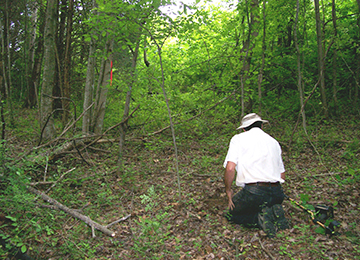When planning development on a property that may have wetlands, most people understand that an environmental specialist will be needed to conduct a wetlands delineation survey and obtain a permit.
What you may not know is that you’ll also need to comply with the Endangered Species Act. It’s critical to keep track of current Endangered Species Act regulations and address the requirements early in the permitting process, so you can avoid unnecessary delays. The U.S. Fish and Wildlife Service list of threatened and endangered species changes frequently as the agency adds or removes species from the list. Survey timeframes also vary from region to region, making it difficult for you to know what needs to be done and when.
Not sure what that really means?
Here’s an example: Let’s take a look at one of the most common pitfalls when it comes to threatened and endangered species: Isotria medeoloides, the small whorled pogonia (SWP). This small orchid grows in 18 states in the Eastern U.S.; Prince William and Stafford counties are two of the most common places in Virginia. Nine times out of ten, when a development is occurring in either location, a county reviewer, a U.S. Fish and Wildlife Service representative, or a Virginia Department of Conservation and Recreation official will request a SWP survey during the site plan or wetlands impact permit review process. That sounds easy enough…
Well, not exactly.
The SWP survey window is extremely short. It only lasts from June 1 – July 20 in northeastern Virginia while the flower is in bloom.
So, if you submit your wetlands permit for review in August, and a SWP survey is required, your wetlands permit could be delayed until a SWP survey can be completed. That won’t be until the following survey season. That’s right – not until next year!
Just like that, your project has been delayed for ten months.
Hiring a knowledgeable environmental team can help you avoid these kinds of pitfalls and keep your project moving forward. An environmental professional can perform the necessary state and federal database searches, prepare a summary letter, conduct any required Threatened and Endangered Species surveys, and provide agency-specific coordination to help you successfully navigate this regulatory morass.
If you want to learn more about how environmental regulations could impact your project, or if you have any questions about threatened and endangered species in general, contact ECS Environmental Scientist Michael Kopansky.

